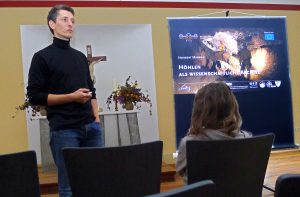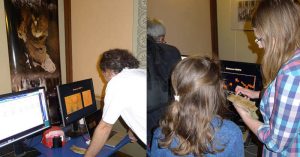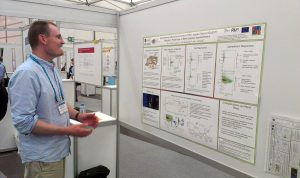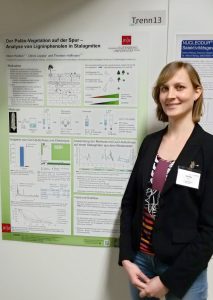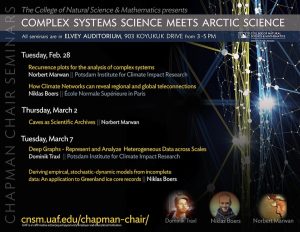The Speleo Club Berlin is a small caving club of cavers from Germany’s capital and surrounding region. At the 20th anniversary of this club in the assembly hall of the “Radfahrer-Kirche” in Kienitz at September 23rd 2017, Norbert gave a public talk on several scientific aspects of cave research, including speleothem based palaeoclimate studies as performed within QUEST. The audience, consisting not only of speleologists but also of the curious public, has been very interested and enquiring.
Outreach
Long Night of Science in Berlin & Potsdam
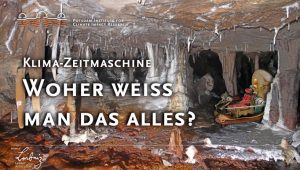 Together with students, Norbert has presented our work at the Long Night of Science in Berlin & Potsdam. The exhibition “The Climate Time Machine” at the Potsdam Insitute for Climate Impact Research (PIK) was together with the modellers group of the PIK who presented a palaeoclimate model (analyzing the impact of a cretaceous meteorite impact and the dinosaurs extinction). The second part of the “Climate Time Machine” was on palaeoclimate archives, including lake sediments and stalagmites. The public interest was amazing. Instead of presenting only numbers and computer graphs, the palaeoclimate was for touching as we were presenting real samples of a stalagmite and lake sediments as well as caving equipment.
Together with students, Norbert has presented our work at the Long Night of Science in Berlin & Potsdam. The exhibition “The Climate Time Machine” at the Potsdam Insitute for Climate Impact Research (PIK) was together with the modellers group of the PIK who presented a palaeoclimate model (analyzing the impact of a cretaceous meteorite impact and the dinosaurs extinction). The second part of the “Climate Time Machine” was on palaeoclimate archives, including lake sediments and stalagmites. The public interest was amazing. Instead of presenting only numbers and computer graphs, the palaeoclimate was for touching as we were presenting real samples of a stalagmite and lake sediments as well as caving equipment.
QUEST at EGU 2017
With several poster and oral presentations the QUEST team has presented its work at the general assembly of the European Geoscience Union in Vienna, April 24–28, 2017.
Meet QUEST at EGU 2017
 We will present our work at the EGU conference in Vienna:
We will present our work at the EGU conference in Vienna:
Monday, 24 April
Tuesday, 25 April
- : Quantitative Palaeoenvironments from Speleothems (QUEST): magnetic properties of two New Zealand speleothems
17:30-19:00, Hall X5, Poster session CL1.13 - C. Nehme, S. Verheyden, S. F. M. Breitenbach, D. P. Gillikin, A. Verheyden, H. Cheng, L. Edwards, J. Hellstrom, S. R. Noble, A. R. Farrant, D. Sahy, T. Goovaerts, G. Salem, P. Claeys: Climatic variability during the penultimate interglacial (MIS 7) and glacial (MIS 6) periods recorded in a speleothem from Kanaan cave, Lebanon (Central Levant)
- M. Weber, D. Scholz, J. A. Wassenburg, K. P. Jochum, S. Breitenbach: Application of LA-MC-ICP-MS for analysis of Sr isotope ratios in speleothems
Congratulations to Inken for the poster prize!
Our study on the equatorial rain belt displacement by analyzing speleothem data now published
Our study on the equatorial rain belt displacement by analyzing data from a stalagmite collected in the Yok Balum Cave, Belize, is now published in Scientific Reports.
Follow us on Twitter!
We have set up a Twitter channel:
Follow @SpeleoQuest
QUEST in the Arctic
Norbert contributed to the Sydney Chapman Chair Seminar series “Complex Systems Science Meets Arctic Science” at the University of Fairbanks, Alaska, 28 Feb 2017 and 2 March 2017: One lecture on recurrence plot analyses for the scienific experts and one lecture on “Caves as scientific archives” for the non-expert audience, but both related to research performed within QUEST.
There was opportunity to visit the one and only permafrost tunnel of the world.
First publication out in Nature Communications
The first publication by members of the QUEST team (Norbert & Seb) has recently been published in Nature Communications on a giant see-saw in the monsoonal realm. Find the paper here: http://www.nature.com/articles/ncomms12929
A press release has also been published by PIK Potsdam:
https://www.pik-potsdam.de/news/press-releases/giant-see-saw-of-monsoon-rains-detected
enjoy!
QUEST at the German Cavers Association Annual General Assembly (VdHK)
Seb presented QUEST in an invited public lecture on the 6th of May 2016 at the VdHK General Assembly in the Harz Mountains. The lecture on “Climate reconstructions from caves and the importance of climate monitoring in caves” appealed to the German speleologists to support scientific monitoring efforts in caves. A lively questioning-answering session helped to explain the importance of monitoring and the roles non-scientists can play in scientific projects. The talk and discussion got great feedback from the community.
